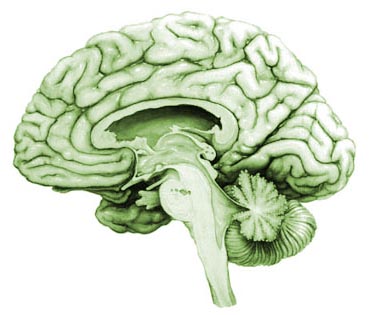It is the year 2132.

Neurotechnology is a booming business. In the 2020s, as microprocessor chip manufacturers hit the walls against Moore's Law, it came as a relief to the booming robotics industry that there would be still faster processors available, outside the normal chip wafer process.
Biotechnology, in conjunction with powerful static memory devices, and biolaminar connections to allow larger throughput, brought real-time decision-making to robotics.
This new wave of technology brought good and evil effects with it. There was already by 2021, a large-scale use of robotics in the industrialized nations. These robots soon replaced common labor-intensive jobs in retail and the service industry. They even began to replace salespeople in the retail arena. People liked always being able to deal with the same "personality" upon request. No matter which store they went into, robots could adapt to their preferred sales mode, doing the work of completing the transaction automatically as soon as the customer had decided. Businesses could "purchase" 3 robotic clerks at pricing similar to what they would pay for workers over a 2-year period, the typical turnaround for such positions. Economically the robots helped both large manufacturers and the small business owners. Human workers do not allow depreciation, yet they require benefits and income taxes to be paid on their behalf. In addition, robotic workers do not require training or surveillence. They are programmed to be knowledgable, ethical employees.
The dark side of this biotechnology was that though the connectivity problem of neural communication to electrical sensors had been solved, the next hurdle, that of preserving the neural tissue outside the living organism had not. The mind of these computers required a body.
As a result of worker displacement, there was a lot of mindpower, in bodies, without the economical means of surviving. That's where our firm made its entrance as the middleman. We patented earlier in 2012, the technology which we called Mindsharing, which allowed people to connect parts of their brain to the network without becoming immobilized.
Sure, this connection technology was earlier developed in the laboratory for military purposes as early as 2008, but this technology was that early technolgy was very sensitive to movement. It was in using our biolaminate connectors that we found we could keep the MindHost(tm) mobile, and the connectors would not come loose.
Since the middle of the twenty-first century, our company has been providing the real-time control and data-aquisition for most of the automaton probes on the inner planets. Those probes were still funded by the big space-faring governments, U.S., Japan, and China. The EU had its own space probes, but we never could get in the door on those contracts, so we were in the dark.
We knew that they were finding some good data in the asteroid belt. There were asteroids that have a lot of potential and those that don't. The big three governments that we had contracts with, though, were focused on the inner planets. Because of budget constraints, and political pressure, their focus was Mars, and its moons.
With some of our own corporate espionage and research funding, we developed a faster propulsion that it would take to get quickly (less than a year) to the Gas Giants. In 2089, we started to hit the gas giants with landers and rovers.
Those planets have given us a lot of data, some of which because of it's economic value, we have not let forth our findings to the Big Three. They whined, and made us look like we made off with the government's money, but really these programs were funded independently of the core system projects.